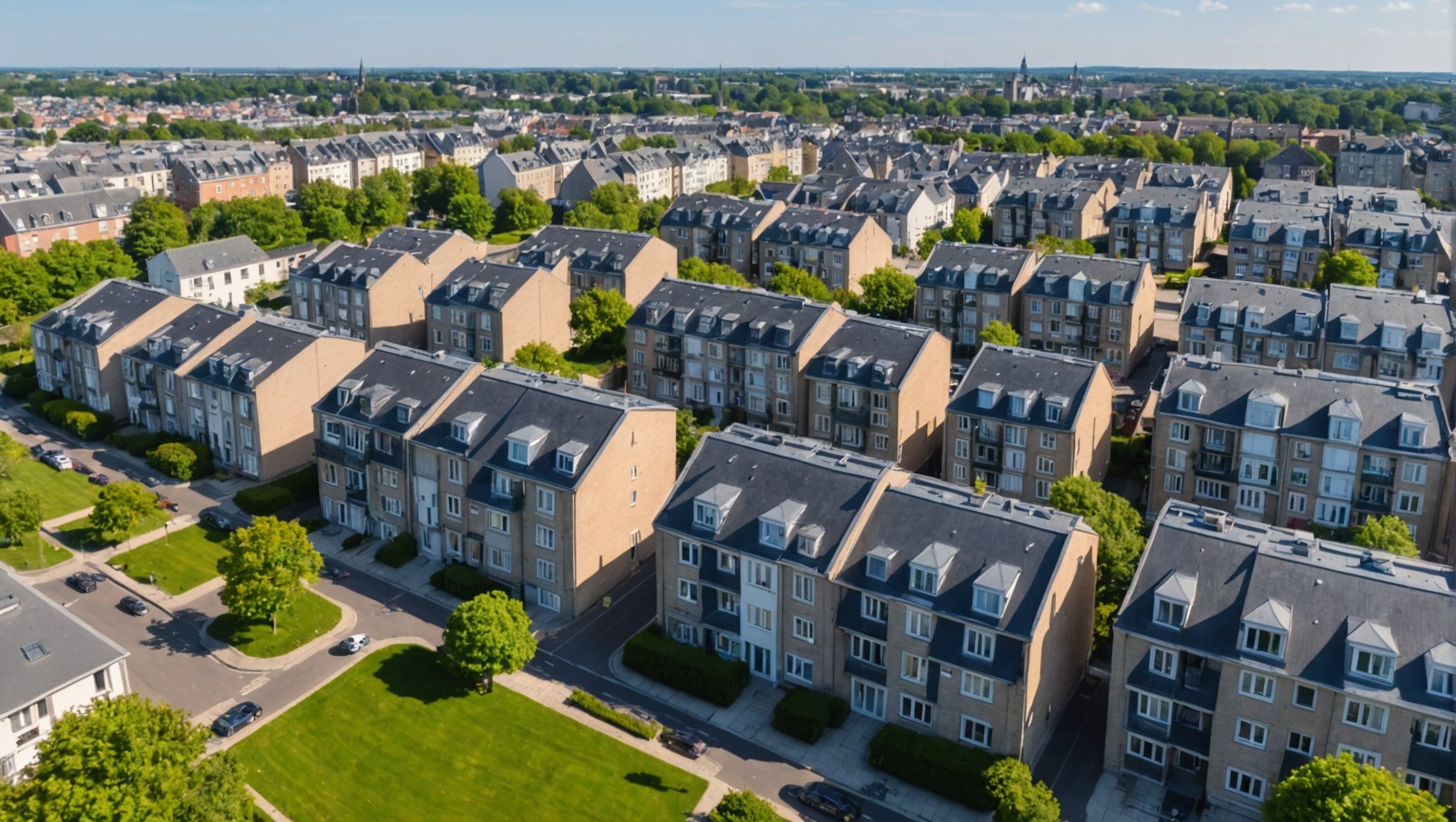Overview of Telecommuting Trends
The rise of telecommuting reflects significant changes in how we approach work. In recent years, the adoption rates of telecommuting have soared. Remote work statistics indicate that companies and employees are increasingly opting for flexible work arrangements. Changing work dynamics suggest that telecommuting is reshaping the traditional office environment.
Demographic shifts also highlight increasing diversity among remote workers. A growing number of younger professionals are seeking remote work roles, valuing the flexibility and work-life balance they offer. Meanwhile, Gen X and Baby Boomers are gradually transitioning into remote roles, driven by necessity or a preference for flexibility in their later career stages.
In parallel : Top Technologies Revolutionizing Security in High-Rise Residential Buildings
Furthermore, technological advances have facilitated this shift, making remote work more accessible and productive. High-speed internet and collaborative tools enable seamless communication, overcoming the barriers often associated with remote work.
Statistical data supports these trends. Studies reveal that productivity and job satisfaction often increase with telecommuting. As we navigate these evolving work patterns, it’s essential to understand the motivations and benefits behind the rise in remote work adoption rates. The workplace landscape is changing, offering opportunities and challenges for both employees and employers.
Also read : Exploring the Rise of Modular and Prefabricated Homes in Urban Landscapes: Key Trends and Insights
Impact of Telecommuting on Suburban Real Estate Demand
The rise of telecommuting has significantly altered suburban real estate demand. As more employees work from home, preferences in housing have shifted. Individuals now seek homes that accommodate office spaces, leading to an increased demand for larger properties in the suburbs.
Examination of Housing Preferences
Remote work impacts where people choose to live. Proximity to urban offices is less crucial, making suburban areas more attractive. This shift results in people prioritising space and affordability over location. Larger homes offer both a comfortable work environment and a family-friendly setting.
Demand for Larger Homes
The need for space has led many to look for homes with additional rooms that can be converted into offices or study areas. Open floor plans with versatile spaces have become desirable. Consequently, builders and developers are adjusting their strategies to meet these evolving preferences.
Case Studies of Market Changes
Notable changes have been observed in suburban markets like the San Francisco Bay Area and the suburbs of Chicago. These regions have reported a surge in demand and a consequential rise in property values, reflecting a broader trend. Such shifts in the housing market serve as indicators of how remote work is fundamentally reshaping real estate dynamics.
Shifts in Suburban Housing Prices
Understanding housing price trends in suburban areas offers insight into real estate valuation and the implications of market fluctuations.
Price Surge in Suburbs
Recently, there has been a noticeable price surge in suburbs. As commuting becomes more feasible and remote work gains traction, suburban areas have experienced an impact from increased demand. This shift has led to notable market fluctuations, driving prices higher. Unlike urban areas where growth might be stymied by saturation, suburban regions still have space for development, contributing to the difference in price growth.
Affordability Challenges
The rise in suburban housing prices poses affordability challenges, particularly for first-time homebuyers. With demand outstripping supply, the balance has swung towards higher prices, complicating the path to homeownership. This imbalance between supply and demand challenges potential buyers, pushing the need for a closer examination of sustainable affordability solutions.
Long-Term Valuation Predictions
Experts remain divided regarding long-term valuation predictions. Some forecast continued growth due to ongoing demand, while others predict that rising prices could eventually taper off as the market stabilises. Utilising statistical modeling, analysts attempt to project future real estate valuation, considering potential economic and environmental factors impacting housing price trends.
Changes in Suburban Amenities and Infrastructure
The influence of telecommuting on suburban amenities and infrastructure is noticeable. With more people working from home, the demand for robust internet connectivity and local office spaces has surged, prompting infrastructure development. Communities are investing in enhancing broadband services to support these needs, facilitating residents who now rely heavily on digital communications and services.
Recreational and community spaces have also experienced shifts. As the emphasis on local living grows, there is a notable increase in the development and enhancement of parks, trails, and community centers. Residents seek places for leisure and social interactions close to home, driving this demand for improved suburban amenities.
Suburban infrastructure is also adapting to shifts in public services and transportation. With more people spending time locally, authorities are reconsidering the allocation of resources toward more localized services, including healthcare and educational institutions. Transportation networks are being optimized to support intra-community connectivity rather than focusing solely on commuting to urban centers. These changes reflect an ongoing shift in community preferences and needs, emphasizing the importance of infrastructure development to accommodate evolving living and working patterns.
Personal and Economic Impacts of Telecommuting in Suburbs
Telecommuting has brought significant personal impacts to families relocating to suburbs. This shift often results in enhanced work-life balance, as reduced commuting time affords more opportunities for family interactions. With telecommuting, individuals can enjoy a more relaxed environment, fostering mental well-being and productivity.
On an economic level, the increased suburban population due to remote work provides a notable push in local economies. As more families settle into suburban areas, they contribute to the community’s financial health through local spending. Small businesses, such as cafes, grocery stores, and retail outlets, benefit economically from this influx, seeing heightened demand and customer activity.
Moreover, the social fabric of suburban communities evolves with remote work. With more people working from home, there’s an amplified sense of community well-being. It becomes easier to engage in local events and volunteer activities, boosting local relationships. Additionally, as telecommuting promotes flexibility, it facilitates a culture of sharing and collaboration, strengthening community ties.
Ultimately, the economic effects and social shifts spurred by telecommuting underline the importance of connectivity and adaptability in suburban living, reshaping how individuals and communities engage with their surrounding environment.
Case Studies and Expert Insights
As telecommuting becomes more prevalent, certain suburban regions are witnessing significant changes. A closer look at these areas reveals intriguing patterns and insights. For instance, an in-depth analysis of suburban regions such as Draper, Utah, showcases how these communities adapt to the increasing shift towards remote work. Housing demands are surging as more professionals seek comfort away from bustling city centres.
Expert interviews provide invaluable perspectives on this trend. Dr. Lisa Caldwell, a renowned urban planner, notes that “the future of suburban real estate will be largely influenced by the telecommuting potential of regions.” She envisions suburbs turning into telecommuting hubs, attracting businesses and enhancing local economies. This transformation involves more than just real estate; it’s about crafting environments conducive to remote work while maintaining suburban life charm.
Data-driven insights from top analysts show intriguing responses across various markets. Recent stats highlight a 15% rise in home offices’ demand in suburban listings, suggesting a growing preference among buyers prioritising telecommuting capabilities. Consequently, real estate developers are reimagining suburban layouts to integrate efficient designs catering to remote workers. By focusing on practical aspects such as these, suburbs are not merely witnessing a shift but undergoing a substantive evolution.
Future Predictions for Suburban Real Estate Market
As we look into the future real estate trends, it’s clear that telecommuting will have a lasting impact on housing demand in suburban areas. With an increasing number of companies adopting permanent telecommuting policies, employees are no longer bound to expensive urban centers. This shift is predicted to lead to a rise in suburban real estate demand, as people seek larger living spaces with home offices.
Telecommuting Forecasts
The move towards telecommuting is expected to continue shaping the housing market. Suburban areas, offering more space at lower costs, will likely see heightened interest. This trend suggests a market outlook where suburban developments expand and evolve to meet new preferences.
Policy Changes and Market Stability
Potential policy changes could influence suburban development. These might include incentives for developing infrastructure or zoning adjustments to accommodate growing populations. Such policies could stabilize the market by ensuring developments are sustainable and attractive to incoming residents.
Long-term Market Adjustments
Over the long term, the real estate market might face adjustments as remote work practices become the norm. Market stability will depend on how quickly and effectively suburbs can adapt to these evolving telecommuting trends, balancing growth with community resources and amenities.










